The mystery of Seat Mii Electric charging
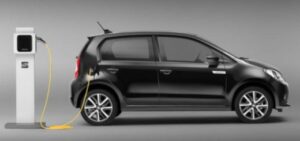 After an awaiting of 8 months (!!!) we now own a Seat Mii Electric. I have then done some charging tests with an Openevse wallbox. This wallbox’s connected to smarthome server then I can analyse charging datas of the car.
After an awaiting of 8 months (!!!) we now own a Seat Mii Electric. I have then done some charging tests with an Openevse wallbox. This wallbox’s connected to smarthome server then I can analyse charging datas of the car.
Note that apart from smartphone app which should be different from one brand to the other, it’s fairly probable that those information are although true for Skoda Citygo-e IV and Volkwagen e-up, if they are of latest generation (32kWh battery).

The vehicle is equipped with a button for management of charging which is located at the bottom of the dashboard.
This button’s showing charging status and you can also change the mode.
Lighting of the button can have three states :
- shut down : no charge programmed et no ongoing charge
- fixed lighting : programmed charging. Charge will start later following the configuration you’ve done.
- flashing lighting : charging ongoing
Pressing this button have the following actions :
- if lighting is fixed (like animation) : switch to immediate charging (lighting switches off). Then two possibilities :
- If a charger is connected, charging’s starting (flashing lighting)
- if not charger then immediate charge is activated during 35 seconds, then it goes back to planned charging. 35 seconds is then the time you have to plug the charging cable onto the car.
- if lighting is off : activation of programmed charge (then lighting switches on)
- if lighting’s flashing : charge is stopped and activation of programmed charge.
Note that this button have any lighting if car is switched on. It stayes active also around 1 minute after the car’s switched off. After this delay the lighting is switched off to reduce consumption.
Charge programming
It can be done using three methods :
- by using smartphone app DriveMii App.
- by using website my.seat. Connection with the car is done with its 3G connection. You can then configure the charging everywhere
- To have it working
- SIM card of the car have to be activated
- you have created an account
- you have integrated your car inside this account
- To have it working
 by using the smartphone app Seat Connect app which offers the same functions than the website
by using the smartphone app Seat Connect app which offers the same functions than the website
Charging speed at home
This subject seems simple, but it’s not. The following information are from tests I’ve done at home (electric network is recent and single-phase, wallbox openevse, 45A electric subscription)
First of all, we have to remind that technical specification of the car are true : Seat Mii Electric can charge at 32A although on single-phase installation, meaning a full charge for 5 hours. It’s important in my case because I want to charge during night and off-peak hours which is a timeframe of 5 hours here. 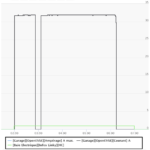
The charge time I can measure is 4h35 from 10% to 100%, then 5 hours for full charge is true. I’ve also checked that charging current, which is in fact regulated by the car itself, is constant and without peak. My circuit breaker being a 32A it would have tripped quickly if it was not the case.
Let speak about less sympathetic information :
- firstly it seems that 32A charge’s only activated when car’s SIM has been activated and charging speed have been changed on Seat Connect App.
To enable it, start a manual charge from app but with a lower power level than “Maxi”, for instance 13A. After some minutes set charging speed to “Maxi” and activate the charge. From this point your vehicle should be able to charge at 32A (thank you @pfr69).
There’s no reason not to activate this sim, but this needs some to have it done. I have then at least some reason why first charges shouldn’t be that fast. - then in single-phase I can check that 32A charge is only possible for a programmed charge or a battery level below threshold (during night for instance, or battery level below the 30% level I have set). If I connect the car during the day on the same wallbox and activate charging immediately, current is limiting to 16A, then charging time is doubled.
Charging time on public charging station
Don’t hesitate to confirm or correct those information by writing a comment at the end of this post.
- immediate charge on public charging station with Type 2
 connector (then AC) permits to charge at 32A (7,2 kW). (thanks to Philippe C.). It’s probably linked to the fact that this station provide three phase electricity. Full charge can then be done for 5 hours.
connector (then AC) permits to charge at 32A (7,2 kW). (thanks to Philippe C.). It’s probably linked to the fact that this station provide three phase electricity. Full charge can then be done for 5 hours.
For that you have to configure the maximum charging current for instance by using Seat connect App
the maximum charging current for instance by using Seat connect App - it’s also possible to DC charge using combo CCS
 connector up to 40kW. Be aware that this power value is a maximum, in real lif it’s limited by several factors : charging level of the battery, battery temperature, battery wearing … The charging time is theorytically of 1 hour for 80% charge.
connector up to 40kW. Be aware that this power value is a maximum, in real lif it’s limited by several factors : charging level of the battery, battery temperature, battery wearing … The charging time is theorytically of 1 hour for 80% charge.
Charge programming
I’ve not tested multi-periods charging configuration. But I’ve tested with a single period, for instance using Seat connect App, here is a presentation : 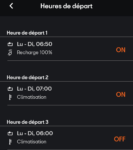
- at first you configure departure time
- Be aware this is not starting time of the charge, but the time when you plan to start using the car.
- The vehicle will then start more or less sooner the charging in order to attain the requesting level at departure time
- during this configuration you can also configure an off-peak period. I’ve read that this features seems to be buggy. I then propose not to use it, and only set departure time at the end of off-peak period.
- Associatied to departure time is a location

- This term is quite strange because it is limited to configure type of charge and maximum level of charge
- Type of charge : charge only, air conditioning only or both
- Level of charge : Maximum level of battery charge with 10% increment.
- Reducing the maximum level of charge has the benefit to improve battery live. If it’s sufficient for your own use, think to limit maximum level of charge to 80% or 90% most of the time.
- This term is quite strange because it is limited to configure type of charge and maximum level of charge
Charging curve with a home wallbox
Here are two measures with end of charge set to 6h50 (“departure time”) :
| Charge 10% to 90% (controlled by smarthome server at the end) | Charge ~80% to 100% |
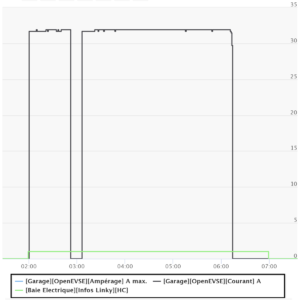 |
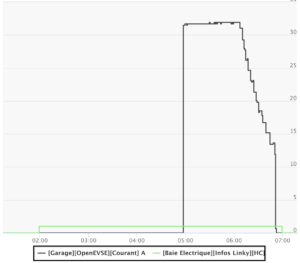 |
We can discover several things on thos :
- Left curve
- Charge algorithme start at a coherent time taking some marging. We can see there is a stop of charge during 30 minutes around 3h00 in order to resync on configurerd departure time.
- there can be some charging gaps but target is attained in the timeframe.
- charge current is constant at 32A for 10% to 90% battery level.
- here end of charge is stop by smarthome controller which request wallbox to stop charging.
- Right curve
- Current is decreasing slowly from 32A to 13A during the last 50 minutes. This is a normal behavior when charging Li-ion. This correspond to battery level from 90% to 100%
- It seems then interesting to prevent charging above 90% if you are in a hurry and have no need of this extra juice.





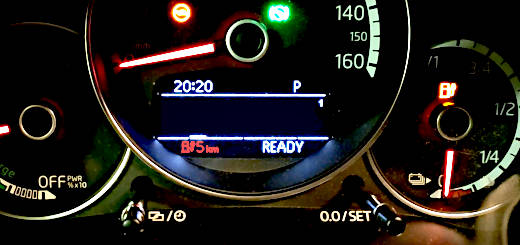
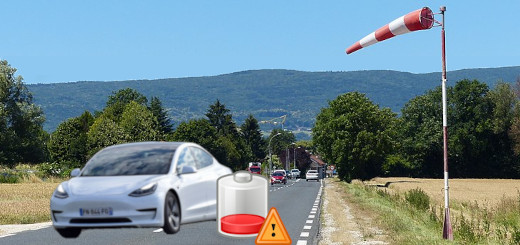
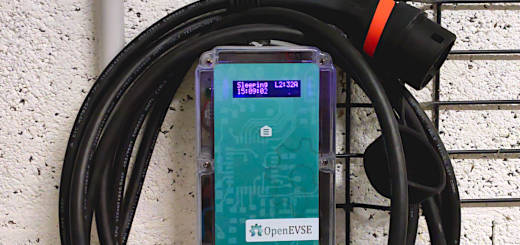
Bonjour,
Avec ma Mii de 06/2021 (production supposée le 28/01/2021) j’ai déjà chargé 20,6kWh en 2h45 soit 7,5kW sur une borne 7,2Kw (qui est donc en monophasé 32A) avec mon câble T2-T2 fourni et ce avant même d’avoir commencé à utiliser les applications Seat.
La date a peut-être une importance étant donné qu’il y a eu des mises à jour sur les première Mii.
Autre sujet : le site Web my.seat a été définitivement désactivé. Il ne reste plus que 2 des 3 possibilités.
Salutations, Rénato
Bonjour et merci pour ces explications qui lèvent un coin de la limitation à 16 A.
J’ai une e-Up et l’application We-connect a été gratuite pendant 1 an ; elle est ensuite proposée à 90 € par an sauf erreur. C’est beaucoup trop cher et je l’ai donc abandonnée.
Du coup, il semble que je sois bloqué à 16 A avec ma borne monophasée 32 A…
Et quelle idée de réserver cela à la charge programmée !
J’ai essayé le tuto et malheureusement je suis toujours bloqué à 3,7 kW pourtant je suis bien connecté en type 2 sur une borne au travail qui délivre 22kw . En mettant 16 À je descend à 2 kW puis en remettant à 32A rebloqué à 3.7 kW pourtant j’arrive à charger en combo CCS… Je comprends pas 🙁
Lorsque vous effectuez les modifications dans l’application, attendez vous bien que la synchro se fasse avec le véhicule (petits points qui arrêtent de tourner) ?
Pouvez-vous essayer de mettre le paramètre “Etat de charge minimal” à 100% pour voir si cela pourrait aussi avoir une influence ? Cela influe sur le cycle de charge et engage la charge à pleine vitesse à n’importe quelle heure de la journée, sans prendre en compte les plages horaire de charge programmées. C’est un paramètres accessibles par la roue crantée en haut à gauche de l’application Seat Connect.
Normalement ce n’est pas utile, mais qui sait …
Just wanted to say what a great article. Have had my Seat Mii electric for a few months now and could not understand why I wasn’t achieving more than 1kw an hour charge at home. I was convinced it was my home charger at fault and after countless visits by technicians they kept telling me the charger was working fine. After stumbling across your article I downloaded the Seat drive Mii app and followed what you said above and it’s solved the problem and I now achieve 6 kw an hour. No one at Seat was able to help so thanks very much!
Bonjour M. , je viens d’acquérir un kona 64Kwa et je suis intéressé par la box open evse , depuis la première charge avez vous rencontré des problèmes et y a t’il des précautions particulières.
merci A Sonzogni
Bonjour,
Bonne question cela fait 4 mois que j’utilise open evse, j’ai prévu de faire un petit article sur ce retour d’expérience.
En deux mots : pas de pb particulier, ça charge efficacement et en 32A.
Les petit soucis que j’ai eu : une programmation domotique défaillante (ma faute !), une déconnection wifi 3 fois en 4 mois (lié peut être à mon routeur wifi, ça arrive aussi sur d’autre périphériques domotique), une température interne de l’openevse assez élevé.
Pour ce dernier point cela signifie : ne pas mettre le boîtier en plein soleil, éventuel coupure de charge sur des charges très longues à 32A le temps que la T° redescende (ça coupe si T° interne atteind 60°), ou si le boîtier n’est pas à l’extérieur faire simplement quelques trous à la perceuse pour avoir un minimum d’aération du boîtier qui est étanche.
J’ai bien une Mii . Je suis Philippe28 sur AP. J’ai mis sur borne tri 3.6 kWh en 30 mn. Débridage obligatoire de l’intensité de la recharge immédiate sur Seat connect sinon hors programmation, impossible d’y échapper !
Quant aux 35 secondes c’est voiture non branchée et programmation active pour le lendemain matin donc pas de déclenchement immédiat. Si j’éteins le bouton et que branche dans les secondes qui viennent, ok, la charge immediate se lance. Si j’attends plus de 35 secondes, et que je branche… Pas de charge. Vérification : j ouvre la porte, le bouton se rallume ! Bon courage à ceux qui me lisent
J’ai bien une Mii . Je suis Philippe28 sur AP. J’ai mis sur borne tri 3.6 kWh en 30 mn. Débridage obligatoire de l’intensité de la recharge immédiate sur Seat connect sinon hors programmation, impossible d’y échapper !
Je charge a 32 A sur borne publique T2. Relevé chargemap a l’appui. J’ai mis l’intensité de charge immédiate sur Max.
Bonjour, je suis également au maximum, et je vois cette limitation chez moi sur monophasé. Étrange, avez vous une MII electric ? Quelle appli utilisez vous pour régler le max, de mon côté je privilégie Seat connect ?
J’ai testé sur la borne suivante qui serait en triphasé, et en faisant le calcul kWh chargé versus temps cela me donne plutôt 16A, mais pas sûr à 100 % : https://fr.chargemap.com/brevcarploufraganzoopole1.html
A vérifier , ” si le bouton est allumé fixe (comme sur l’animation) : passage en mode charge immédiate (extinction du bouton). Si un chargeur est connecté, démarrage de la charge (allumage clignotant)” il faut le faire dans les 35 secondes (!) . Sinon la programmation se remet en route… Sans allumer ce fichu bouton! Testez : éteignez le bouton , attendez une minute et branchez un chargeur…. Ben ça ne démarre pas !
Bonjour, merci pour l’information. Je vais réintégrer cette information. Par contre je ne comprend pas tout a fait. Lors de mes tests voici de mémoire ce que j’ai fait : bouton allumé + prise branchée depuis quelques minutes –> j’ai le résultat filmé. Comment s’applique les 35 secondes que vous indiquez ?
Bravo et merci pour cette analyse très complète de la charge des triplettes du groupe Volkswagen, qui lève le voile sur certaines interrogations comme la charge bridée à 16 A pour certain en mono phasé.